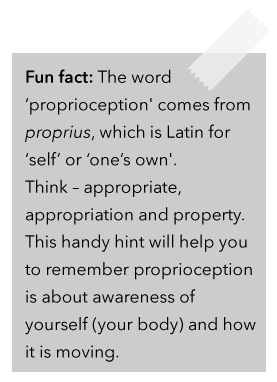Articles & Videos
Pressure problems in handwriting
Categories
Subscribe to our newsletters
Receive teaching resources and tips, exclusive special offers, useful product information and more!
Pressure problems in handwriting
Writing Time 26/11/20

On one side of the classroom, you may have a student with dark, smudged writing and punctured paper. On the other side, you may have a student with writing so faint it’s almost impossible to read. The former happens when students apply too much pressure with their pencil, while the latter occurs when students don’t apply enough pressure.
 Students rely on an in-built system known as the ‘proprioceptive system’ to inform how much pressure is needed to complete a task. Just like we use our proprioceptive system to recognise that more effort is required to move a backpack than a pencil, students rely on this system to identify what pressure is needed to achieve fluid handwriting movements.1
Students rely on an in-built system known as the ‘proprioceptive system’ to inform how much pressure is needed to complete a task. Just like we use our proprioceptive system to recognise that more effort is required to move a backpack than a pencil, students rely on this system to identify what pressure is needed to achieve fluid handwriting movements.1
If you’re seeing pressure problems in your students’ handwriting, try these ideas.
Set the scene for success
Provide your students with the right tools before you begin your handwriting lessons to ensure they have every chance to apply appropriate pressure.
Consider changing pencils:
Identify which students may benefit from different pencils and encourage them to use softer (2B) or harder (HB) pencils, depending on their needs. 2B pencils are better suited to students with faint handwriting that is difficult to read as the lead is thicker and darker. HB pencils are a better choice for students who apply too much pressure as the lead is harder and lighter, making it more difficult to smudge.
Model ‘too light’, ‘too dark’ and ‘just right’ handwriting:
Place a handwriting sample of ‘too light’, ‘too dark’ and ‘just right’ on each student’s desk or display the samples on the classroom walls. Encourage your students to compare their handwriting to the samples to find areas for improvement.2 As well as comparing samples, it’s a good idea to demonstrate the different pressure types to your students. Talk through what you’re doing and correct yourself aloud so students can identify your ‘mistakes’.
Project the 3Ps:
Ensure that poor pencil grip is not the underlying cause of your students’ handwriting pressure issues. Incorrect pencil grip not only affects the quality of students’ handwriting, but can also lead to fatigue or discomfort, making writing an unpleasant experience. Before students begin writing, encourage them to think about how they hold their pencil. Start your handwriting lessons, or an extended writing task, by projecting and discussing the 3Ps (posture, paper position and pencil grip) from Writing Time Online. As students write, walk around the room and correct any pencil grip issues one on one.
Have students explore different pressures
Provide students with opportunities to explore different pencil pressures so they can better identify an appropriate pressure to apply when handwriting.
Practise shading:
Use the fine motor activities in the Writing Time Student Practice Books to practise shading. Ask students to adjust the pressure they apply to their pencil to shade different shapes light, medium or dark grey.
Swap students’ paper for corrugated cardboard:
If you have a student who constantly uses excess pressure, try swapping their paper for corrugated cardboard. This way, if they puncture holes in the cardboard, they know they’re using too much pressure.
Try ghost writing:
Ask your students to write very lightly on paper and then carefully erase the words without leaving any marks. Have students exchange paper and if the erased words are illegible, the writer wins the game.1
Experiment with different pressures:
Ask students to write a sentence that’s ‘too light’, ‘too dark’ and ‘just right’. Discuss how the writing looks and how their hands feel after writing each sentence.2
References
- Beck, C 2019, Pencil pressure when writing, 23 September, viewed 16 October 2020, https://www.theottoolbox.com/pressing-too-hard-when-writing-tips/↩
- Department of Occupational Therapy, Royal Children’s Hospital 2005, Occupational Therapy - Kids health information: Pencil pressure, viewed 16 October 2020, https://www.rch.org.au/uploadedFiles/Main/Content/ot/InfoSheet_I.pdf↩